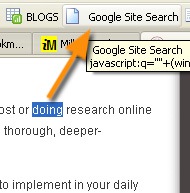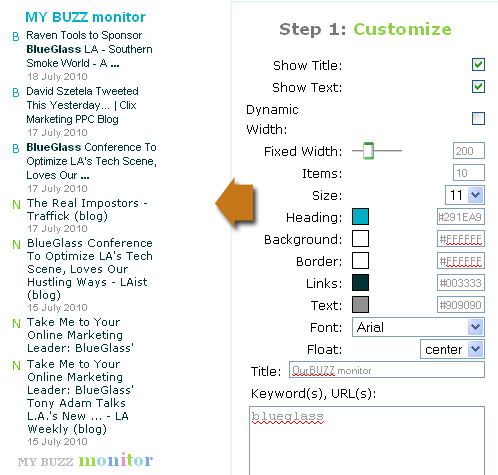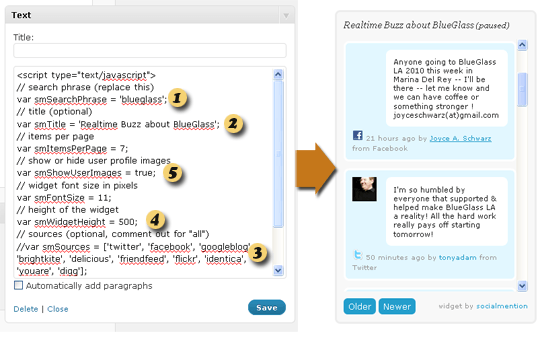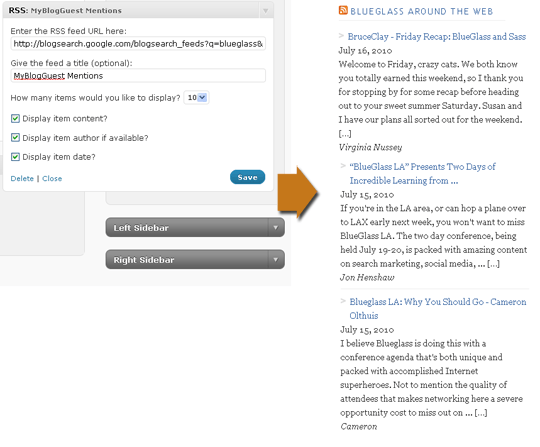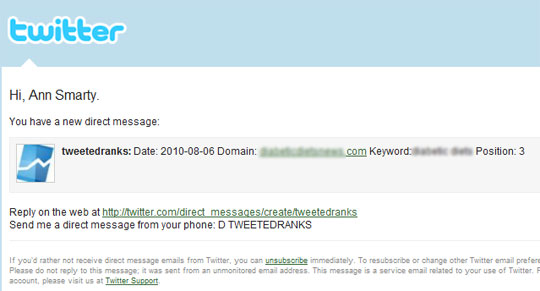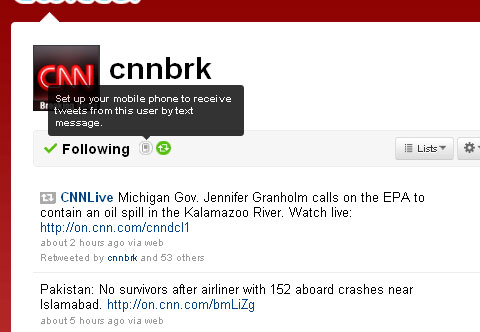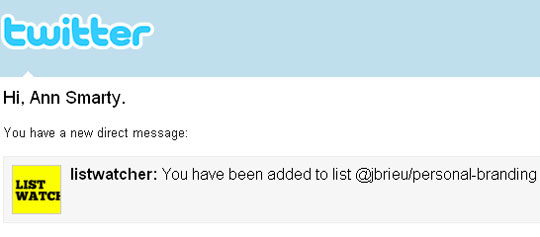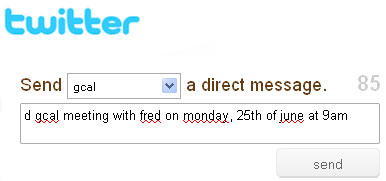6 Ultimate On-Page Search Engine Optimization Tips
These on-page search engine optimization tips will assist you in setting up your pages with the appropriate title and meta tags, headers, text elements and alt attributes.
1. Title Tag
The Title tag is used to define the title of a web page, with the Title tag placed between the and tags in the html of the page. Search engines will recognize the Title tag as the title of the page. Each page should have its own distinct Title tag.Fundamentals:
- The Title will be displayed within the browser at the top of the browser window or tab.
- When a user searches for a specific word or phrase, Google will return a link to the website, and the Title tag will be displayed as the anchor text for the website link.
- The text in the Title tag is one of the most important relevancy factors influencing search engine ranking algorithms.
- Using your most important keywords or keyphrases in the Title tag will have a dramatic effect upon your page’s ranking for those keywords.
Take Aways: It is recommended that you keep your Title short, preferably between 10 and 64 characters, 70, at most. Over 70 will not contribute any weight as part of the document.
Use of irrelevant words (not found on the page) in your Title will dilute the impact on your targeted keywords. Use of irrelevant words can also trigger the spam filters of the search engines. Place your most targeted keyword phrases as early as possible in the Title. Try to minimize the use of stop words, such as a, an, of, on, etc., as they consume character count and offer no value.
2. Description Meta Tag
Used to provide a brief description of a Web page, the Description meta tag should clearly describe the purpose of the page, for both the user and the search engines.- The importance of the Description tag as an element of the ranking algorithm has decreased significantly over recent years, but some search engines may still support this tag.
- The search engines will often display the Description along with the Title in the SERPS (search engine results pages).
Keep your Description between 50 and 149 characters, including spaces, whenever possible. Google will display 154 characters, but other search engines display less. Longer descriptions are of little value, as most search engines place little to no importance on this tag.
In extreme circumstances, the Description can be as long as 200 characters (including spaces), but understand that there is a high probability of truncation. As is the case with the Title, the use of irrelevant words can trigger the search engines’ spam filters. Avoid adding text that is not found within the visible text of the page.
Description Meta tags are not intended for the search engines, they exist for human users. Therefore, the text should be written to attract the user and convert them to a buyer, achieving the best ROI for your SEO efforts.
3. Keywords Meta Tag
This tag lists the words or phrases that are descriptive of, and found within the contents of the page. This tag provides some additional text for crawler-based search engines. However because of frequent attempts to abuse their systems, most search engines now ignore this tag.Note: Of all the major crawler-based search engines, only Inktomi currently supports the Keywords Meta tag.
Similar to the Meta Description tag, there is a limit to the number of captured characters within the Keywords Meta tag. Keep the tag to between 4 and 8 keywords or keyphrases, separated by commas.
Syntax: Keyword1,Keyword2,Keyword3,Keyword4
All keywords listed in the Keywords Meta Tag should appear at least once in your content (body), or they may be considered to be irrelevant spam. You should also avoid repetitions, to prevent penalization by the search engines for keyword “stuffing”. The most important keywords should be listed first, to increase their prominence for the search engines that still consider this tag in their determination of your pages’ rankings.
Side Note: Approximately a year ago, Yahoo was still considering the keywords meta tag. While that may have changed, it will do no harm to use this tag, provided you don’t abuse it.
Attention! If you are utilizing XHTML+RDFa (which is recommended), you should not use the keywords meta tag. Opt instead, for the implementation of “Common Tags”.
Yahoo! Announces the “Common Tag” and why is it better: Like The Meta Keywords Tag, But Even Better.
4. Heading Tags (H1-H6)
Syntax:Keyword1 in the Heading
,Keyword2 in the Heading
, etc.The “Header tag” is nothing more than a headline of the page, so it should be kept short. 45 characters, including spaces, is a good target.
Each page should have a clearly defined
header tag, to identify the primary subject of the page to both the user and the search engine. Be sure to use the primary search phrase you are targeting within this tag. Note: It is important that the primary keyword is located in the first heading tag on the page, regardless of its type. Placing the keyword early in the header tag will increase its prominence.
Standard rules apply for the structure of HTML pages. Written in a document-like fashion, they should include:
- Title
- Major heading, describing the main purpose of the section.
- Subheadings, highlighting the key points of each subsection.
Many search engines rank the words found in headings higher than the words found in the body text of the document. Some search engines will also incorporate keywords by looking at all the heading tags on a page.
Don’t try to stuff your heading tag with too many keywords, or words that are not relevant to the content in the body. Having multiple
Don’t try to stuff your heading tag with too many keywords, or words that are not relevant to the content in the body. Having multiple
tags on the same page may cause you to be subjected to a penalty by the search engines, as it may be seen in the same light as “keyword stuffing“. It is certainly appropriate to have multiple headlines appearing on a page, like
,
, etc., provided they follow a hierarchical order. The
should be the first heading tag, followed by the
, then the
, and so on.
5. Phrase Elements
Use the semantical tags and tags for targeted keywords within the visible content of your pages, but sparingly. Those tags are alternatives to the and tags, which can also be used, but are for visual presentation purposes only.6. Alt Attributes
Resist the temptation to stuff your alt. attributes with keywords. Keyword density is no longer as important as it once was, and doing so could subject you to penalties.-----------------------------------------------------------
The 4 Hardest Things About Conversion Optimization For Local Search
As I was perusing through some updates on twitter the other day I came across an Alan Bleiweiss article entitled CONVERSION OPTIMIZATION IS THE NEW BLACK. Now, not only did the article have an extremely catchy and trend-a-rific title, but Alan really hit the nail on head by explaining (and I paraphrase and twist) that in the early days of SEO it was all rankings, click-through’s, and bounce rates. But, as SEO’s continue down the path of perfection the industry benchmark is becoming Conversion Optimization and everything else gets to stand on the 2nd place platform.
I ended up having a great comment section conversation with Alan about some issues with Conversion Optimization in the local search sphere and realized that the dialogue needs to be opened to the search community as a whole for discussion.
The list below contains the 4 hardest things about tracking and optimizing conversions for local search. I would love feedback in order to come up with some of the best possible solutions, and hear any more struggles people are having with this process.
1. Most Sales Take Place Off Line and away from any Javascript Code.
How many final sales for restaurants, doctors, or hardware stores take place online? Of course there are tracking phone numbers (we will talk about this later), contact forms that can be “goaled”, etc. But ultimately, they don’t track a sale, the amount each sale is worth, exactly when it the sale took place, or various other forms of information those in the e-commerce industry can figure with a nice snippet of code.
One of the “a-ha” experiences in Internet Marketing I had was in college when I had to track an online sale from keyword to purchase. I remember thinking, “I know what you typed, I know what you looked at, I know what you spent, and I know what I need to do to get more of you suckers to buy my product!” It was a very satisfying feeling and one I wanted to enjoy over and over again.
Well, that feeling isn’t always the case with local search. Continue on to find out why.
2. “How did you hear about us” only comes true in Fairy Tales.
The most popular form of advertising tracking in America today (according to a recent no-brainer from Mike Ramsey) is simply to ask your customers where they found you. The problem is that most organizations have tons of different people that might answer phones, and the way that a possible customer is asked the question largely determines the answer given. For instance, a question started with “Where did you see us?” will result in more people talking about driving by, or seeing it on TV. “Where did you hear about us?” will result in more people saying on the radio or from a friend. Wording is important to ensure total accuracy, and wording is a hard thing for people to get right. Some more issues are that employees might forget to ask the question, they might write the data and lose it, or various other “dog ate my conversion” type happenings.
I do think that if Local SEO’s can stress “pen and pad” customer sales tracking to a company enough, they might make a spreadsheet and implement an exact wording, and exact form for tracking leads + sales and amounts. But, you still don’t see the search terms that the customer typed, or have a clue what they did on the page. Also, my experience with trying to get companies to do their own call tracking goes like this…
1. Train Client
2. Implement System for them to follow
3. Test
4. Leave them to it
5. Find that the system has been tampered with, changed, and is broken
6. Bang head on wall and start at “a”
That is when I change a familiar quote to the following…
“If you give a man a fish you can feed him for a day….If you teach a man to fish then he will just sit on the bank and drink beer unless you are there to keep holding his hand.”
You can come up with the perfect system, but adding people to it somehow ruins the entire process.
3. Call Tracking Numbers + Local Map Optimization = A great idea…just like the Titanic.
The best idea (in theory) to getting a solid idea of how your online campaigns are producing leads+sales is call tracking implemented with web analytics. The data is not dependant on a secretary remembering to ask the “golden question”. You can listen in on phone calls and find out how well the sales team is doing. You can even track individual campaigns with a specific phone number to drill down. Call tracking seems to be the best solution for offline businesses. The only problem is trying to use call tracking with a Google Places listing is like aiming a big boat at the tip of an iceberg without realizing that a big old mamma is under water waiting to sink you. Rankings in maps are built around the quality and quantity of places that a business’s name, address, and phone number are found across the web.
Let me say that again in all caps incased you missed it….
Rankings in maps are built around the quality and quantity of places that a business’s name, address, and phone number are found across the web.
This information needs to match up on every directory, page, and place that search engine spiders visit in order to ensure all the data gets linked to your business profile. Since call tracking numbers are different than the true business phone number, here are the possibilities of what could happen.
1. Using an image based call tracking number like My Next Customer ‘s system on a website would ensure that no search bots found the number and ended up with confused phone call data. But, many people call the numbers found right on the map listing in search results so you wouldn’t truly be tracking all your local search calls.
Description: Picture 4.png
The number on your listing has to be same number distributed throughout the web. If not, then you might end up with duplicate listings as the search engine might think that the phone number represents a totally different business.
2. Switching all numbers you publish online (IYPs, Directories, and Websites) to a single local call tracking number is another option. If you do this, then you might avoid duplicate listings for a while. But all of your internet funnels would fall under one number limiting the amount of specific tracking you can do. Also, offline YellowPage’s that have a different phone number listed in the book might re-add that phone number to their online site and bam, duplicate listing issues.
Description: Picture 5.png
Of course with one add of a column Google Places could fix this faster than a tire change during the Daytona. The column would simply be… “Phone Number you would like to display on your listing”. Then they could still use the real number for data purposes but add the option to use a phone number to track a listing and get some real use from Google Voice. Will this happen? I sure hope as that day I will finally be out of tracking woes and I will do a happy dance for conversions.
4. If you ain’t got the money, honey. I ain’t got the time.
The biggest problem for most small business companies that use local search is they get what they pay for, and they don’t pay for much. If a company is going to hire a local search marketing expert and expect a sweet conversion optimization tracking system, then they are going to have to pay for it. In local search, there are not a ton of small businesses that can afford, or see the true value in rich tracking because it is something they have spent so little time with in their other advertising methods. This is not the case for every small business but seems to be for a vast majority.
I hope that local search will soon see a lot better Conversion Optimization methods come in to practice. But, I also see that “rankings” will still be extremely important and the focus for most small businesses. At this time I don’t think I would sacrifice rankings for the ability to use call tracking and fall off of the map. There are a lot of great platforms that have great conversion optimization abilities, I just look forward to the day we are able to see the same with maps. Until then, make sure you have your pen and pad handy.
-----------------------------------------------------
Google Places Removes Yelp Reviews From Search Results
As of right now, Google has removed all Yelp reviews from its Places feature. Even though the local reviews website’s snippets will no longer be appearing in the Google Places results, relevant results can be found in the “more about this place” section – which is the last section on the Places page.
Evelyn Rusli from Tech Crunch conducted an experiment to see whether or not Yelp snippets had really become a fond memory on Pages. She found that every once in awhile a Yelp snippet would appear, but when clicked on the page was there. It seems this is Google’s way of filtering out the content.
A few months ago Yelp was a little perturbed to find that Google was crawling its pages for content to bolster Pages’ results. The two companies have had a pretty rocky relationship since Yelp walked away from the relationship they had with Google, who was paying them for access to their user-created content. However, they are said to be in “talks” to come to some sort of agreement when it comes to Yelp content being used on Google Places.
-------------------------------------------------
New Awesome Ways to Search within Current Site (Using Google)
I am sure you are familiar with (and using regularly) Google’s most useful search operator SITE: – that restricts search results to the domain you specify. I for one have covered multiple tips on:
- How to diagnose your site using Google’s operators (SITE: being the main one);
- How to tell a penalty from non-penalty (also using SITE: operator);
- etc
I have listed 3 tools that make Google’s SITE: operator easier to access including: Advanced Dork (not available in FireFox 3.6.8), Search Site (still valid and can be used) and Google site search (runs on Greasemonkey).
Today’s post shares 2 new tools that allow to search within the current domain with one click of a mouse:
1. CyberSearch: Search From URL / Address bar
CyberSearch is a multi-option search addon for FireFox that among other features allows to search within current site.To do that just type:
>your search termRight in the address (location) bar. It first suggests you the results from the current domain on the fly (which make it possible to search without SERPs).
After you click {Enter} – it takes you to Google’s search results restricted to the current domain and with >your search term as the search query.
For example, if you want to search for [firefox addons] when browsing SEJ, just type >firefox addon and you are done:
(1)

(2)
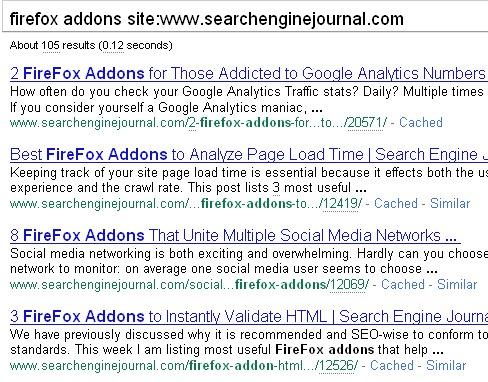
2. Milly’s Bookmarklet: Search for the Highlighted Term
The page as a variety of search bookmarklets taking advantage of Google’s search services and operators – one of them is based on SITE: search:Google Site Search (just drag this link into your browser’s bookmark toolbar)
Compatible with: FireFox (latest version), Netscape, Internet Explorer (4 and above) and Opera
To use it, just highlight any term on a page and click the bookmarklet – you will be instantly taken to Google’s search restricted to the current domain with the term you highlighted:
